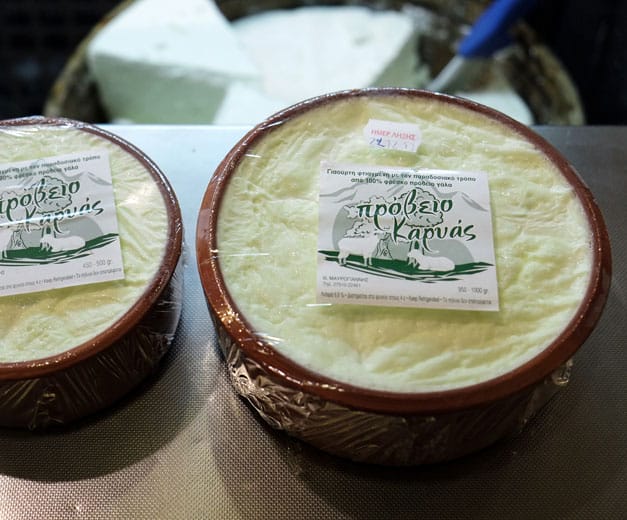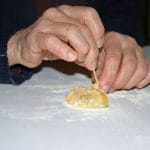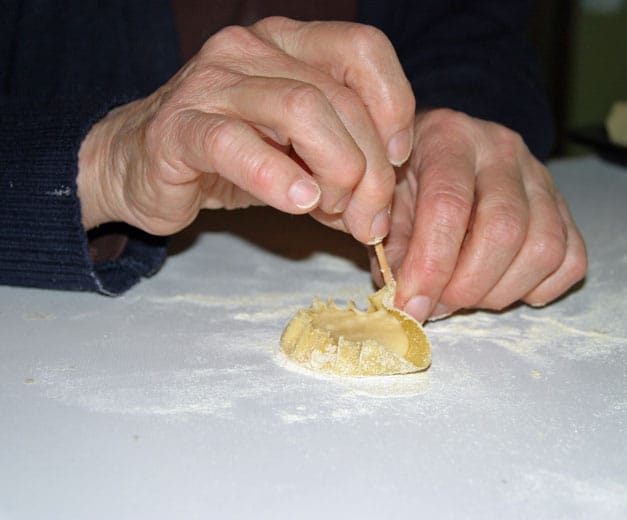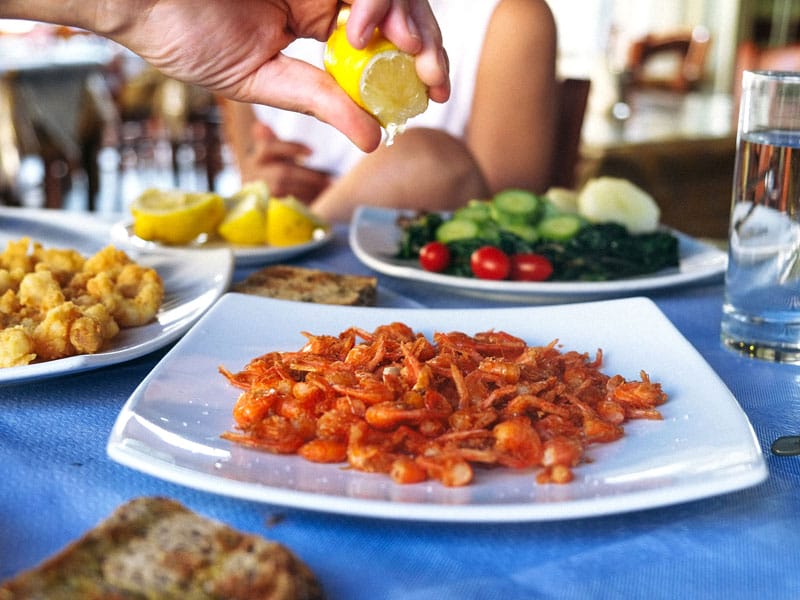In a recent New Yorker profile of Turkish entrepreneur Hamdi Ulukaya, founder of Chobani, a wildly successful company that makes Greek-style yogurt in the U.S., we read with great interest about the trip writer Rebecca Mead made to Argos, in the Peloponnese, where renowned cookbook author Diane Kochilas had told Mead she’d had “the best yogurt she had ever tasted.”
Kochilas was referring to Galaktokomika Karyas (“Karya’s Dairy”), a small, family-run operation in Karya, a picturesque village just 30 km from Argos. Though we were not able to travel to Karya to see for ourselves where this yogurt is made, we visited the shop that the Mavroyiannis family runs in Vironas, a suburb of Athens. The cheerful, pint-sized shop consists mostly of two large refrigerator cases and a marble counter and is fully stocked with neatly stacked sacks of legumes, cartons of eggs and other provisions, as well as enormous wheels of aged cheeses and barrels holding feta. Theodosios Mavroyiannis, a father of four, started the business only six years ago, after working for years for other dairy producers. His hard work and expertise paid off: his yogurt, which is sold in shallow ceramic dishes and small plastic cups, is strong in flavor, yet balanced, and has an intense rustic aroma. Someone not fond of yogurt may find it perhaps overwhelming. But we agree with Kochilas – this is truly one of the finest traditional yogurts we have ever had.

Traditional Greek yogurt is usually made from sheep’s milk. Its high fat content gives it a thick, creamy consistency and distinct richness and flavor. (In contrast, the yogurt that Chobani has popularized in the States gets its richness from being strained.) It has a slightly sour taste and leaves a fresh sensation in the mouth. “Live” yogurt, as we call it, does not contain preservatives, stabilizers, artificial coloring or flavors; it consists of just two ingredients, milk and bacteria culture. It consequently has a shorter shelf life than the industrial version. And although the manufacturing method is virtually the same, the taste and texture of each batch of artisanal yogurt has its own identity and distinct characteristics owing to what the animal has been eating and the environment in which the animal is being raised.
In Greece yogurt is usually served cold. It can be eaten plain and on its own or as part of any meal: with honey, walnuts and a dash of cinnamon as a boosting breakfast, with chunks of fresh fruit as a snack or light meal, or as the foundation of salad dressings or dipping sauces such as tzatziki, in which it’s combined with cucumbers, olive oil and lots of garlic. Yogurt often accompanies a bowl of simple white rice, a plate of homemade French fries or a piece of savory pie. As a light dessert, it’s topped with spoon sweets (traditional fruit preserves).
Usually sold in clay or plastic pots, yogurt can be found everywhere from supermarkets to delis and from farmers’ markets to dairy bars. Among the last, we especially like Bakoyiannis. Vasilis Bakoyiannis worked in various dairy bars before opening his own workshop back in 1954 in Ilioupoli with a little help from his wife. His son, Yannis, who has taken over the small business, recalls Bakoyiannis tooling around Athens on a tricycle distributing fresh milk and yogurt that came from animals that grazed on the pastures of Megalo Pefko (now Nea Peramos, in West Attica). Today, at the very same tiny shop with its old-fashioned marble countertop, we shop for cream as well as rizogalo (rice pudding), both of which we like sprinkled with cinnamon. All the Bakoyiannis products are magnificent, but the yogurt with the thick, voluptuous top layer and the distinctive, tangy flavor reigns supreme.
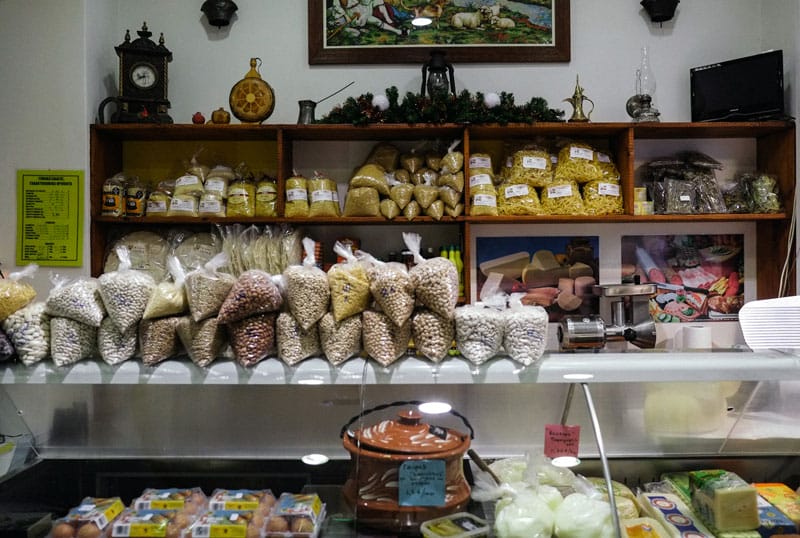
About half a mile away in Ilioupoli is the butcher shop Ravanis. The owner, for whom the shop is named, comes from Athanasios Diakos, a village located at the foot of Vardousia, an imposing mountain in central Greece. His shop is popular not just for meat but also for its exceptional and hard-to-find ice cream, made of sheep’s milk. Customers also flock to the shop for its traditionally produced yogurt.
However, when we’re in the mood to sit down and enjoy our yogurt in a wonderfully classic setting, we head to the dairy bar Stani in Omonia. Or, if we’re close to the port of Piraeus, we go to Korai Square, where the city hall is located, and have a yogurt at Stani Kountoura, a historic dairy bar that has been making the same recipes since 1933. We love it for the retro atmosphere and for the sweet and sour cherries that are served on top of our yogurt.
When it comes to Greek yogurt, it doesn’t get any more real than that.
Published on December 12, 2013
Related stories
April 10, 2015
AthensThe Holy Week in Greece is full of scents and flavors. Ovens work overtime baking brioches (tsourekia), Easter biscuits and melitinia, diminutive sweets that originate from Santorini. Traditionally, melitinia are made by women and girls on Holy Tuesday to be eaten on the evening of the Resurrection and the coming days of Easter (Orthodox Easter…
July 26, 2013
AthensPiraeus holds the distinction of being Greece’s biggest port, as well as the largest passenger port in Europe. Although it is a mere 20-minute train ride from downtown Athens, most Athenians think of Piraeus with a reverence reserved for a foreign country. There is just something almost mythic about this ancient port, which has been…
April 1, 2024
NaplesLike the Proustian madeleine, sweets can stir up all kinds of feelings in the minds of those who eat them. In Naples, struffoli (small, round doughnuts glazed with honey) and cassata (sponge cake with ricotta and candied fruit) speak of Christmas, while chiacchiere (sugar-dusted fritters) and sanguinaccio (literally “blood pudding,” but actually made of chocolate)…







































